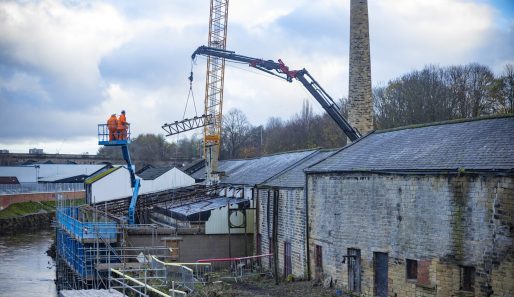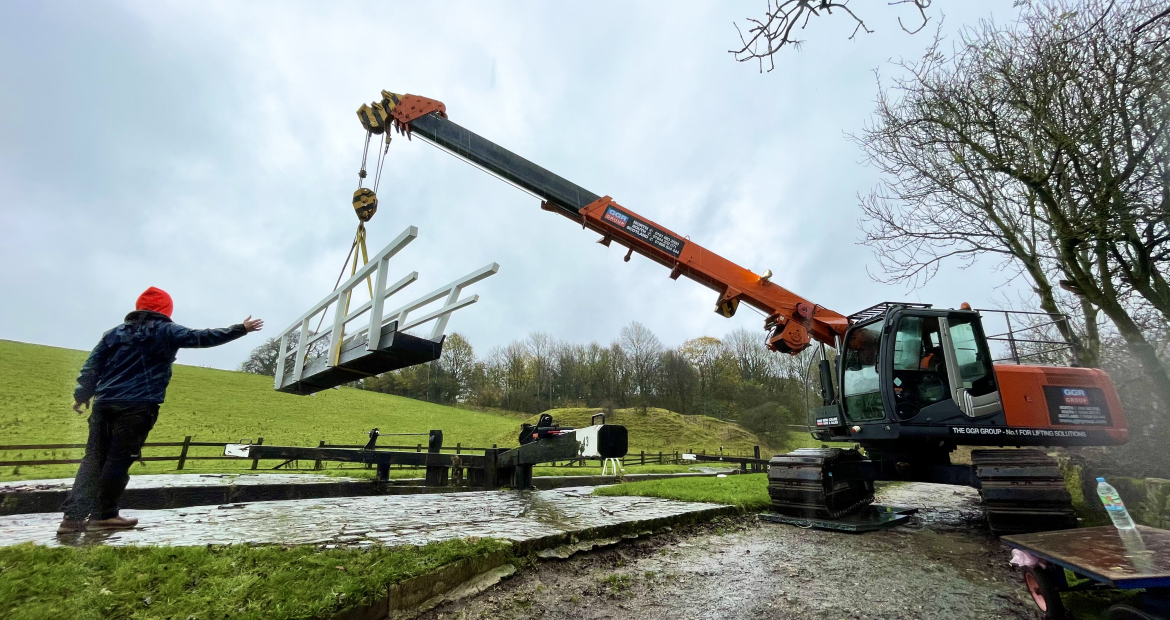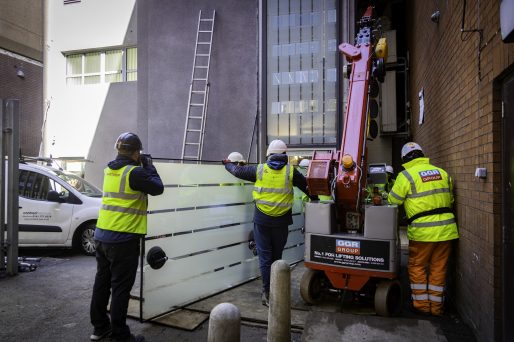Since the first crane was invented physics and maths were a vital part of ensuring the stability of a lift. The first known crane, the shaduf, comprised of a long counterbalanced pole on a pivot. This invention still translates into the development of modern cranes as the deceptively simple combination of accurately calculated leverage and balance.
As modern cranes have developed since the industrial revolution they have quickly had to adjust to the modern world. This means finding ways to lift heavier, higher, and even in compact spaces. Through this companies developed and have continued to develop various ways to allow for these new demands.
Some of the simpler solutions have included the addition of counterweights or the crane having a wider and heavier base. One of the most innovative solutions, especially for mini cranes, has been the use of outriggers. With these ‘legs’ for the crane it spreads the weight of the crane over a wider area. This is similar to having better balance when keeping your knees slightly bent and shoulder width apart.

TMC 525 Articulated Crawler Crane lifting a truss.
The Right Crane for the Job
When selecting a crane for a project what needs to be considered is the load weight as well as the height and working radius needed. All these factors can completely change what you need in a crane in order to complete a lift safely. For example, a crane may have a max capacity of 6 tonnes like the URW-706 but if you need to lift a load of 6 tonnes to 4 metres high it would be unsafe.
One project GGR Group completed was for the Leeds Industrial Museum where we had to shift 500kg steel trusses over a 15m stretch of building. This included needing a crane that could fit in a 5.6m gap on the opposite side of the building to the trusses. When selecting the perfect machine for the job we had to consider more than just the weight of the trusses, but also the height and length of 15m they needed moving to ensure we can keep the crane balanced.
Environment
Weather and ground conditions can cause the stability of a crane to completely change. While the Leeds Industrial Museum lift was precisely planned if wind speeds had surpassed 22mph or the ground had become too wet operations would have been stopped. This is because strong winds can knock a crane over, or more commonly will cause loads to swing or even ‘drag’ the load so the crane topples.
If the ground conditions change such as becoming wet or icy it can make operating a crane unsafe. Your crane could get stuck or lean too far to one side and fall over. For more information on how to work around different weather conditions read our blogs on crane safety in winter and summer.
Confined Spaces
Working with limited space can often be an issue when trying to keep a crane balanced. Confined areas can be awkward to move in and can result in unusual positions when shifting loads. Due to this, cranes can become unbalanced as there is more room for mistakes to be made.
A great solution to working in confined areas is a mini crane. GGR Group is supplies a wide range of mini cranes that are suited for heavy lifting and confined areas. At a recent project in Manchester City Centre our GF42 Pick and Carry Crane was hired to lift a glazing unit into a 1.4 metre wide by 2.4 metres deep recess. This challenge was overcome due to the GF42’s small size and impressive reach and lifting power.
Correct Training
The majority of crane accidents are typically from the crane being overloaded. However proper training can prevent this from being an issue for you. Knowing how to safely operate the crane as well as where to find the crane’s rated loads chart. A trained operator will have the knowledge needed to identify issues with the crane, environment, and load being lifted.
If you hire a crane from GGR Group, we also have the option for you to hire one of our operators or a full contract lift. With over 25 years of expertise, you will be guaranteed to be supplied with a safe and accurate lift. With a contract lift our team will be able to pinpoint any issues before they develop and supply you with the best equipment for the job.
Keeping a crane balanced is a joint effort between the machine’s manufacturing and the team operating/creating the lift plan for it. For advice on choosing the right crane for you and if you need an operator, contact us today. Our knowledgeable team can inform you of all the equipment that could be a potential fit.
Trackback URL: https://www.ggrgroup.com/news/how-to-keep-a-crane-balanced/trackback/

